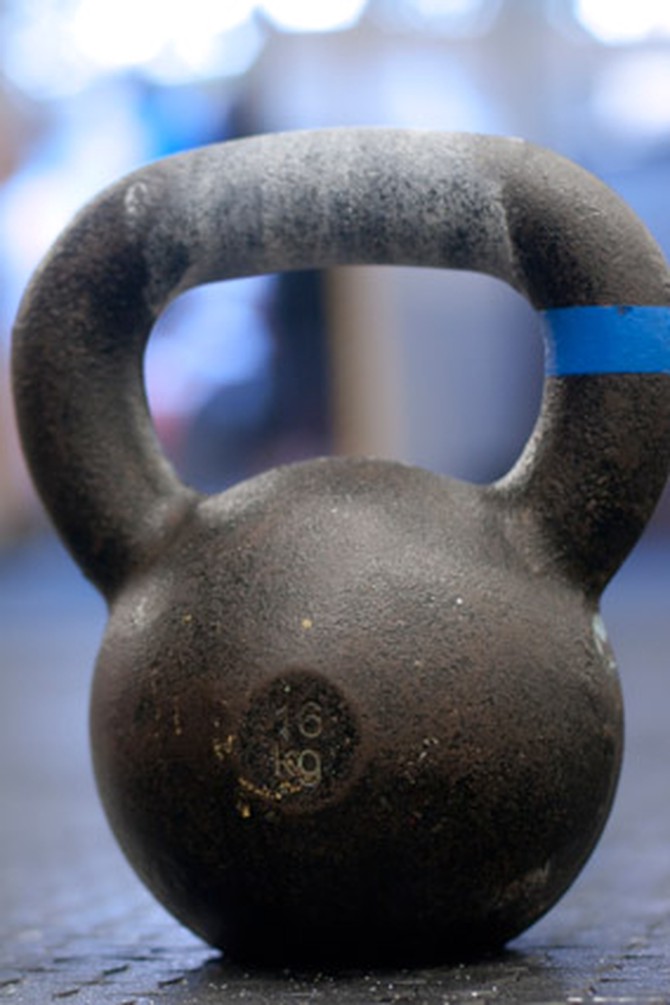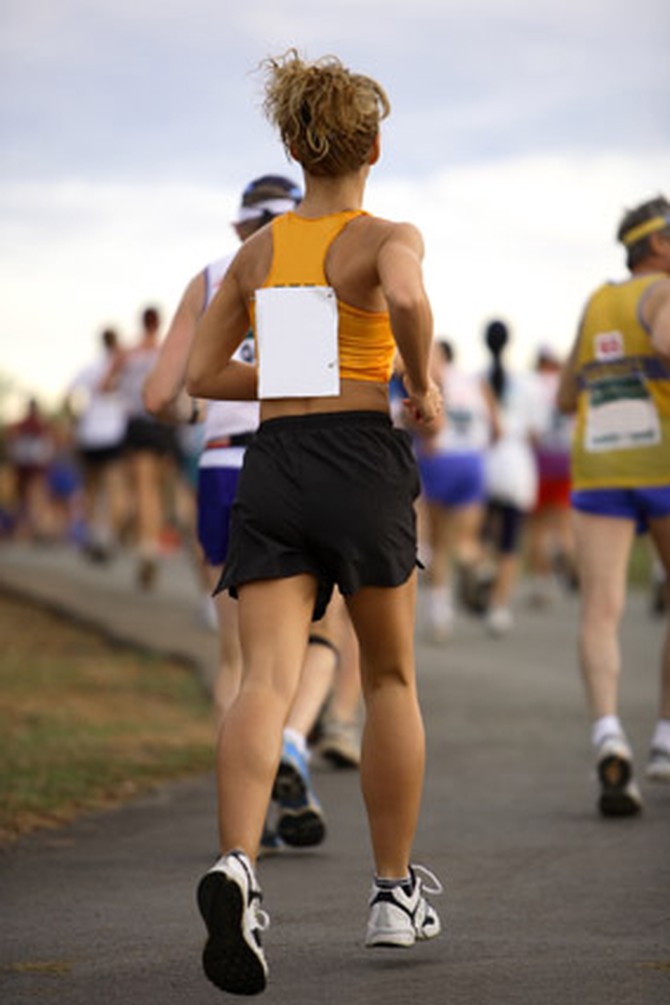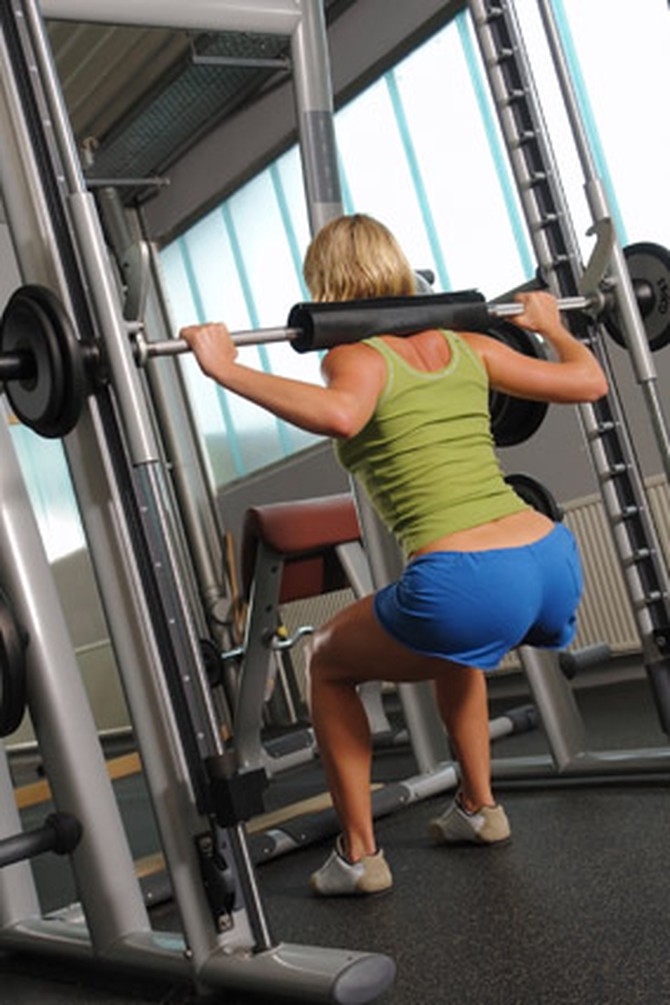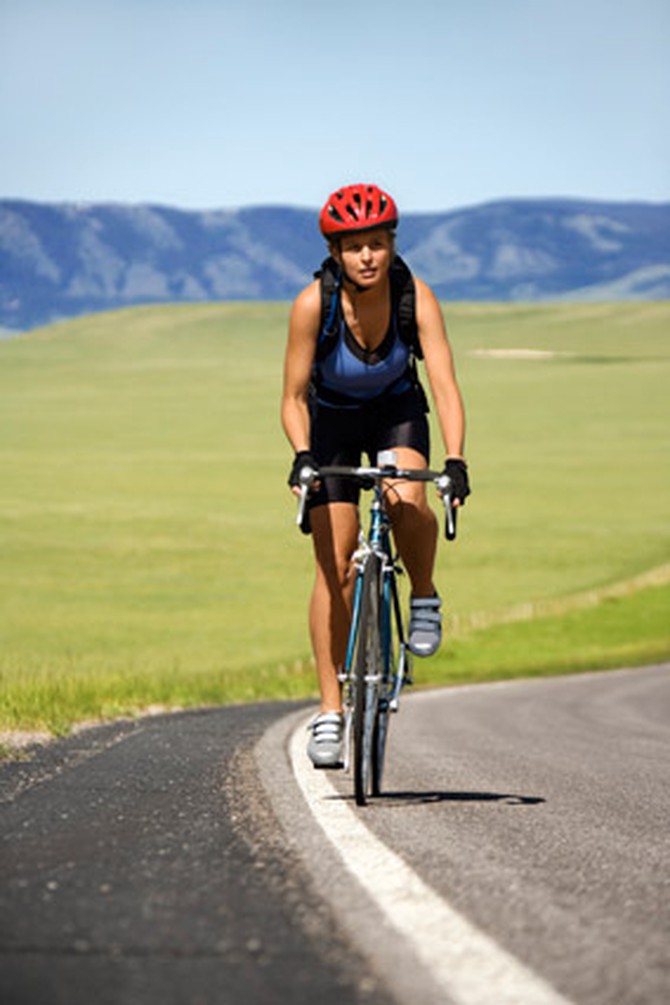6 Workout Dangers That Could Ruin Your Summer
The sunny weather has inspired you to break records...here's how to avoid breaking anything else.
By Corrie Pikul

Photo: Thinkstock
The Strain That Strikes in the Water
Expect: Toned arms and back; a stronger core; improved cardio fitness
Avoid: Sore, aching shoulders
Shoulder strains don't just strike poolaholics who swim six to eight miles a day. This inflammation of the rotator cuff, which makes the joint feel like it's on fire, can also afflict weekend freestylers who aren't doing the stroke properly, says Jessica Matthews, an exercise physiologist for the American Council on Exercise, who also used to teach swimming and aquatic fitness.
Do it right: When swimming freestyle, make sure that all five fingers dive under the water together, with your palm facing down, Matthews says. If your thumb is going in first, you're over-rotating your shoulder.
Read more: Two professional coaches help you get reacquainted with your inner mermaid
Avoid: Sore, aching shoulders
Shoulder strains don't just strike poolaholics who swim six to eight miles a day. This inflammation of the rotator cuff, which makes the joint feel like it's on fire, can also afflict weekend freestylers who aren't doing the stroke properly, says Jessica Matthews, an exercise physiologist for the American Council on Exercise, who also used to teach swimming and aquatic fitness.
Do it right: When swimming freestyle, make sure that all five fingers dive under the water together, with your palm facing down, Matthews says. If your thumb is going in first, you're over-rotating your shoulder.
Read more: Two professional coaches help you get reacquainted with your inner mermaid

Photo: Thinkstock
The Mistake With That Weight That Makes Everyone Look Good in Shorts
Expect: Toned glutes, quads and hips
Avoid: Kettlebell training involves such powerful movements that Matthews says people often get carried away and lose control of their form—or of their weight (she's heard of a gym-goer accidentally swinging a weight into someone else's back). Strains are another problem. One of the trickiest kettlebell exercises to do correctly is the single-arm swing, which is a combination of a squat and an arm swing. Matthews sees people putting too much of their upper body into the lift, which can lead to shoulder and back strains, as well as torn rotator cuffs.
Do it right: Hold an 8- to 15-pound kettlebell in one hand. Brace your core, squat down with your weight on your heels and push upward from the legs as you stand and swing your arm up. The movement should generate from your hip, while the arms provide stability instead of momentum, Matthews says.
Read more: Unexpected dangers to avoid at the gym
Avoid: Kettlebell training involves such powerful movements that Matthews says people often get carried away and lose control of their form—or of their weight (she's heard of a gym-goer accidentally swinging a weight into someone else's back). Strains are another problem. One of the trickiest kettlebell exercises to do correctly is the single-arm swing, which is a combination of a squat and an arm swing. Matthews sees people putting too much of their upper body into the lift, which can lead to shoulder and back strains, as well as torn rotator cuffs.
Do it right: Hold an 8- to 15-pound kettlebell in one hand. Brace your core, squat down with your weight on your heels and push upward from the legs as you stand and swing your arm up. The movement should generate from your hip, while the arms provide stability instead of momentum, Matthews says.
Read more: Unexpected dangers to avoid at the gym

Photo: Thinkstock
The Goal That Could Sideline You in a Race
Expect: Motivation to work out; a faster pace
Avoid: Overuse injuries
Competing against your fellow gym junkies has lost its thrill, and you feel ready to take on a few hundred other runners in an outdoor race. But many participants (not just first-timers, either) increase their mileage too quickly (say, going from two to three miles on the treadmill several times a week, to four to five miles outside every morning), leading to injuries like hamstring strains, tendonitis and shin splints.
Do it right: Assess your shoes and keep in mind that pavement is harder on soles than the treadmill's rubber belt. If it's time for an upgrade, you'll want to break in your sneakers long before you get to the starting line. Then, "set a reasonable goal for your skill level and take small steps toward achieving it each day," says fitness guru Bob Greene. This means finding a training plan (here's one that will help you finish a 5K in six weeks) and maybe joining a running group.
Read more: Bob Greene on the fitness goals you should skip
Avoid: Overuse injuries
Competing against your fellow gym junkies has lost its thrill, and you feel ready to take on a few hundred other runners in an outdoor race. But many participants (not just first-timers, either) increase their mileage too quickly (say, going from two to three miles on the treadmill several times a week, to four to five miles outside every morning), leading to injuries like hamstring strains, tendonitis and shin splints.
Do it right: Assess your shoes and keep in mind that pavement is harder on soles than the treadmill's rubber belt. If it's time for an upgrade, you'll want to break in your sneakers long before you get to the starting line. Then, "set a reasonable goal for your skill level and take small steps toward achieving it each day," says fitness guru Bob Greene. This means finding a training plan (here's one that will help you finish a 5K in six weeks) and maybe joining a running group.
Read more: Bob Greene on the fitness goals you should skip

Photo: Thinkstock
The Worst Way to Row
Expect: A full-body workout that busts you out of the jogging rut
Avoid: A slipped disk
Rounded shoulders, curved back, pulling as hard as possible: This is how many people think they should use the rowing machine, and it makes trained rowers cringe. "I always see people using this machine as an arms-and-back workout," says Esther Lofgren, a current World Champion rower who is training for a spot on the U.S. Olympic Team. And they take the same form from the gym to the lake. It's a blessing that these amateur rowers tire quickly on the water, because, as Jessica Matthews says, this incorrect posture puts pressure on back and spine and can lead to herniated disks.
Do it right: Push back with power from the legs and let the arms and back follow (you should be hinging at the hips). Instead of hunching your shoulders up to your ears, keep a long neck and straight back throughout the stroke.
Read more: More unexpected dangers to avoid at the gym
Avoid: A slipped disk
Rounded shoulders, curved back, pulling as hard as possible: This is how many people think they should use the rowing machine, and it makes trained rowers cringe. "I always see people using this machine as an arms-and-back workout," says Esther Lofgren, a current World Champion rower who is training for a spot on the U.S. Olympic Team. And they take the same form from the gym to the lake. It's a blessing that these amateur rowers tire quickly on the water, because, as Jessica Matthews says, this incorrect posture puts pressure on back and spine and can lead to herniated disks.
Do it right: Push back with power from the legs and let the arms and back follow (you should be hinging at the hips). Instead of hunching your shoulders up to your ears, keep a long neck and straight back throughout the stroke.
Read more: More unexpected dangers to avoid at the gym

Photo: Thinkstock
The Peril of Breaking Out of the Weight-Lifting Pack
Expect: Toned muscles; a revved-up metabolism; stronger bones
Avoid: Tears, sprains and strains
You've been taking sculpting classes for months, and now you're ready to do your own thing. But even experienced weight lifters can sometimes get a little overconfident with new machines and fitness props.
Do it right: Dr. Oz suggests taking these steps to reduce your risk of injury while lifting at your own pace:
Warm up. Before you work out, improve blood flow throughout your body with a light jog or uphill walk. You'll also raise your core temperature, and muscles respond better when they're warm.
Breathe. Exhale while you contract your muscles (especially if you have hypertension); inhale as you relax. It may feel slower than what you were doing in class, but this pattern helps keep your blood pressure in check.
Get guidance. Consider hiring a personal trainer for at least one session to show you the latest, most effective exercises and help you create a customized routine.
Read more: Dr. Oz's beginner's guide to building healthy muscles
Avoid: Tears, sprains and strains
You've been taking sculpting classes for months, and now you're ready to do your own thing. But even experienced weight lifters can sometimes get a little overconfident with new machines and fitness props.
Do it right: Dr. Oz suggests taking these steps to reduce your risk of injury while lifting at your own pace:
Warm up. Before you work out, improve blood flow throughout your body with a light jog or uphill walk. You'll also raise your core temperature, and muscles respond better when they're warm.
Breathe. Exhale while you contract your muscles (especially if you have hypertension); inhale as you relax. It may feel slower than what you were doing in class, but this pattern helps keep your blood pressure in check.
Get guidance. Consider hiring a personal trainer for at least one session to show you the latest, most effective exercises and help you create a customized routine.
Read more: Dr. Oz's beginner's guide to building healthy muscles

Photo: Thinkstock
What Lapsed Cyclists Often Forget to Do
Expect: Stronger quads and muscular calves
Avoid: Crashes with the sidewalk, trees, poles, pedestrians and cars
With bike-sharing programs popping up all over the country, it's now more convenient than ever to sneak in a workout while ticking off to-dos. But if you haven't cycled on the road in a while, you may find that it's more complicated than you remembered.
Do it right: It's essential to set up your bike properly, because riding with the seat too low or too high can make you feel wobbly and out of control. When you're sitting on the seat with the pedal at the lowest point, your knee should be slightly bent, not locked straight, says Andy Clarke, president of the League of American Bicyclists. The same goes for your arms: When they're perpendicular to your torso, elbows should be slightly and comfortably bent.
Read more: Expert advice for getting back on the bike
Avoid: Crashes with the sidewalk, trees, poles, pedestrians and cars
With bike-sharing programs popping up all over the country, it's now more convenient than ever to sneak in a workout while ticking off to-dos. But if you haven't cycled on the road in a while, you may find that it's more complicated than you remembered.
Do it right: It's essential to set up your bike properly, because riding with the seat too low or too high can make you feel wobbly and out of control. When you're sitting on the seat with the pedal at the lowest point, your knee should be slightly bent, not locked straight, says Andy Clarke, president of the League of American Bicyclists. The same goes for your arms: When they're perpendicular to your torso, elbows should be slightly and comfortably bent.
Read more: Expert advice for getting back on the bike
Published 06/15/2012

